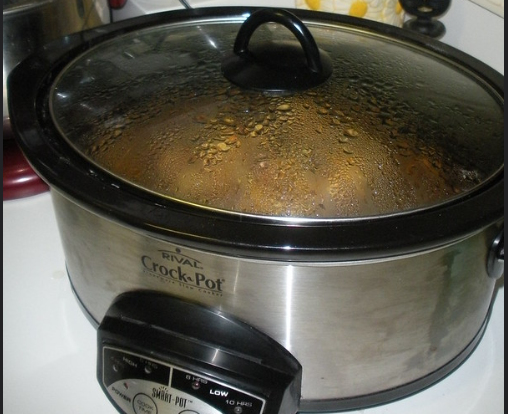Many household repairs can be handled without calling a professional. In some cases, these quick fixes can also save homeowners a bundle in both repair costs and energy expenses. Here are six ways that you can save money, both immediately and in the long run, by doing your own repairs.
Poorly Working Refrigerator
If your fridge is no longer keeping your food cool, the problem may be related to the fridge’s temperature control knob. Simple activities such as removing or replacing food items in the fridge can bump the control knob and adjust the fridge’s temperature. The first step before calling a repairman is simply adjusting the knob back to your preferred setting. If the adjustment isn’t the problem, another common problem is clogged condenser coils. If they’re caked with dust or pet hair, they can’t dissipate heat the way they are supposed to. So just use a vacuum to clear things up (either from underneath or from the back depending on your refrigerator) and enjoy efficient cooling once again.
Ineffective Heating System
If your heating system no longer seems to keep you comfortable, it’s possible that your furnace filter has become clogged. To take care of this and prevent future problems, replace fiberglass filters at least once a month or purchase high quality pleated filters, which only require changing every three months. Another common cause of poor heating is blocked cold air returns. Make sure that your cold air returns aren’t blocked by furniture or rugs, as this can reduce the flow of warm air into rooms. Believe it or not HVAC repairmen have been called out to complaints of poor heating or cooling and found that all the registers have been closed. Opening and closing registers is an effective way to “balance” the system i.e. directing more heating/cooling to certain rooms while sending less to other rooms/ areas. But you can’t close all the registers. Balancing is different for heating seasons and cooling seasons. Usually you want more cool air flowing to upstairs rooms in the summer and more hot air flowing to downstairs rooms in the winter. Obviously, this is because hot air rises and also because during the summer the sun is baking down on the roof making the upstairs hotter than the downstairs thus requiring more cooling.
If you notice that your upstairs is extremely hot on sunny days you might want to consider adding more insulation or a reflective barrier in your attic to reduce the cooling load.
Water-Wasting Toilets
Malfunctioning toilets are common causes of sudden spikes in water bills, and the part that is most often problematic is the toilet’s flapper. If it’s not working properly, your water may drain and refill constantly, day and night, without being obvious. To see if this is happening, you can drop some food coloring in the top tank and check the toilet bowl 10 minutes later. If the water in the bowl is colored, your flapper is probably worn out. Replacing it is very simple, but be sure to take note of the flapper or ring that your toilet uses and buy the proper type at your local home improvement store.
Other common malfunctions are the float valve sticking. Some modern float valves have a latch so that once they fill up and shut off they stay off even if the flapper leaks all the water out into the bowl. This will prevent water wasting toilets by alerting you to the problem the first time you try to flush and there is no water in the tank.
Save Electricity with Blackout Curtains
Sunlight streaming in through your windows during the warmer months can force you to use more energy to cool your home. By installing black-out drapes in your windows, you’ll save significant money each month. Measure your windows and purchase curtain material a few inches larger than your windows in both height and width. Hang the curtains to block sunlight and stay comfortable for less all summer long. Some energy saving curtains have reflective backs or liners designed to reflect more of the radiant heat back outside.
DIY Gutter Cleaning
In the fall, leaves and other debris can build up in your gutters and prevent them from draining properly. This can cause water to back up and overflow getting up under your shingles and if left long enough can even cause rotting and water damage.
You could pay a professional gutter service to clean them for you, but this could be very expensive. Fortunately, it’s fairly easy to clean your gutters yourself. Often all you need is a ladder, a garden hose and a pair of gloves. Just scoop the rotten leaves from the gutter and clear clogs at the top of the downspouts. If the downspouts are still clogged you can use the hose to flush them out. Finally, clean the gutters out using the hose, going from one end to the other in an organized fashion. Just be careful up on the ladder.
Seal Windows and Doors to Block Drafts
It’s common for window and door seals to fail, letting drafts in and costing you more on your energy bill. To check for leaks, hold a lit incense stick or cigarette in front of the inside edges of windows and doors and look for movement in the smoke. Take note of the type of seal type used at each location. In addition to checking the weather stripping seals on doors and windows be sure to check caulked areas where two materials meet on the exterior of your house, for instance where the window trim meets the siding. As this caulk ages it begins to crack and can allow in not just drafts but also water that can cause damage. It is a good idea to spend a few dollars on caulk every couple of years and look around the outside of your house for places that need caulking. Then you can repair problem spots with the appropriate sealing product according to the instructions printed on the package.
See Also:
- How to Save Energy in the Laundry
- 5 Tips: Save Money on Simple Home Improvement Projects
- Dinner Deals 101– Saving on Eating Out
- 5 Ways to Save by Buying in Bulk
See More articles on Frugality, Money Management, Budgeting




